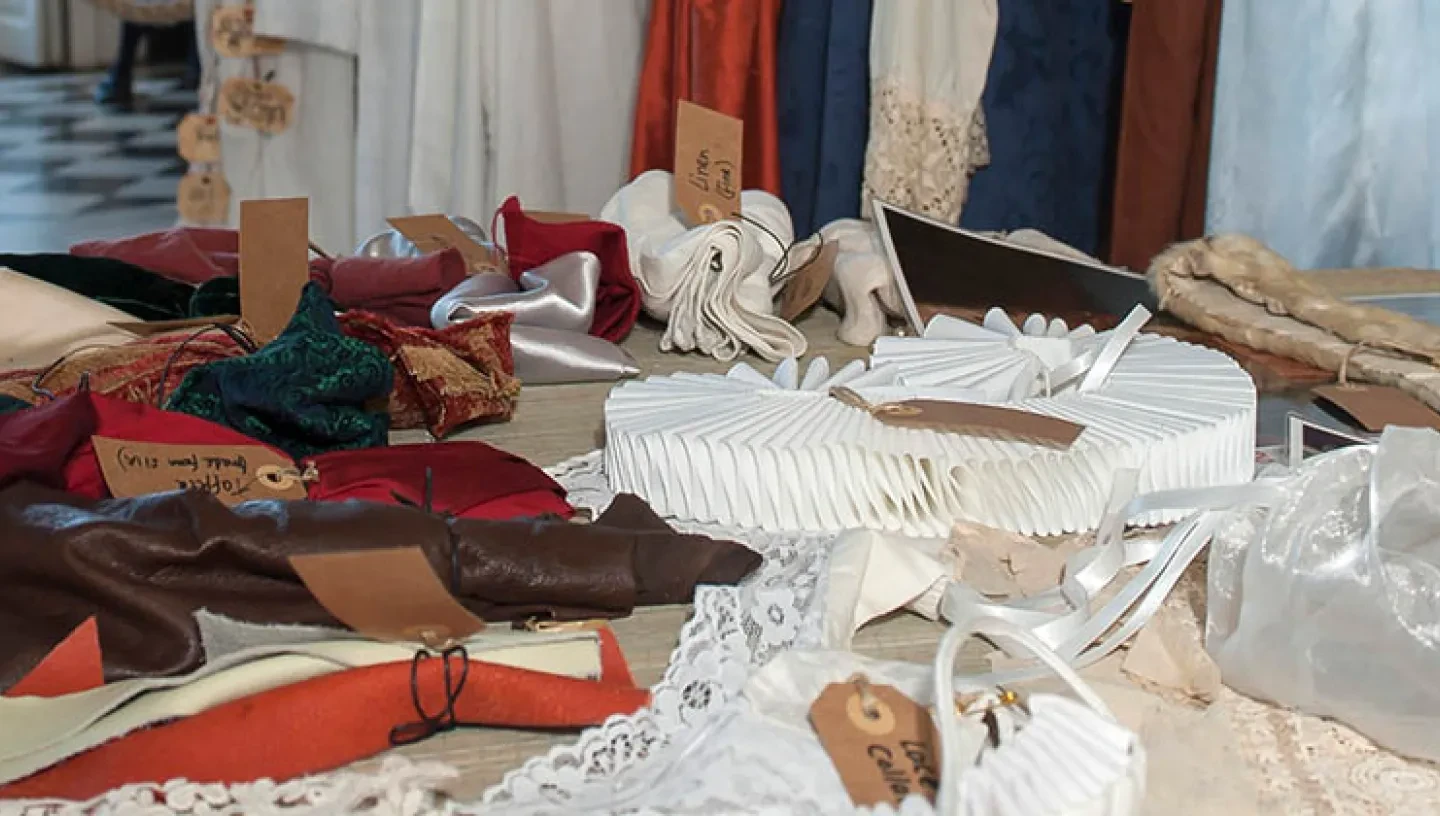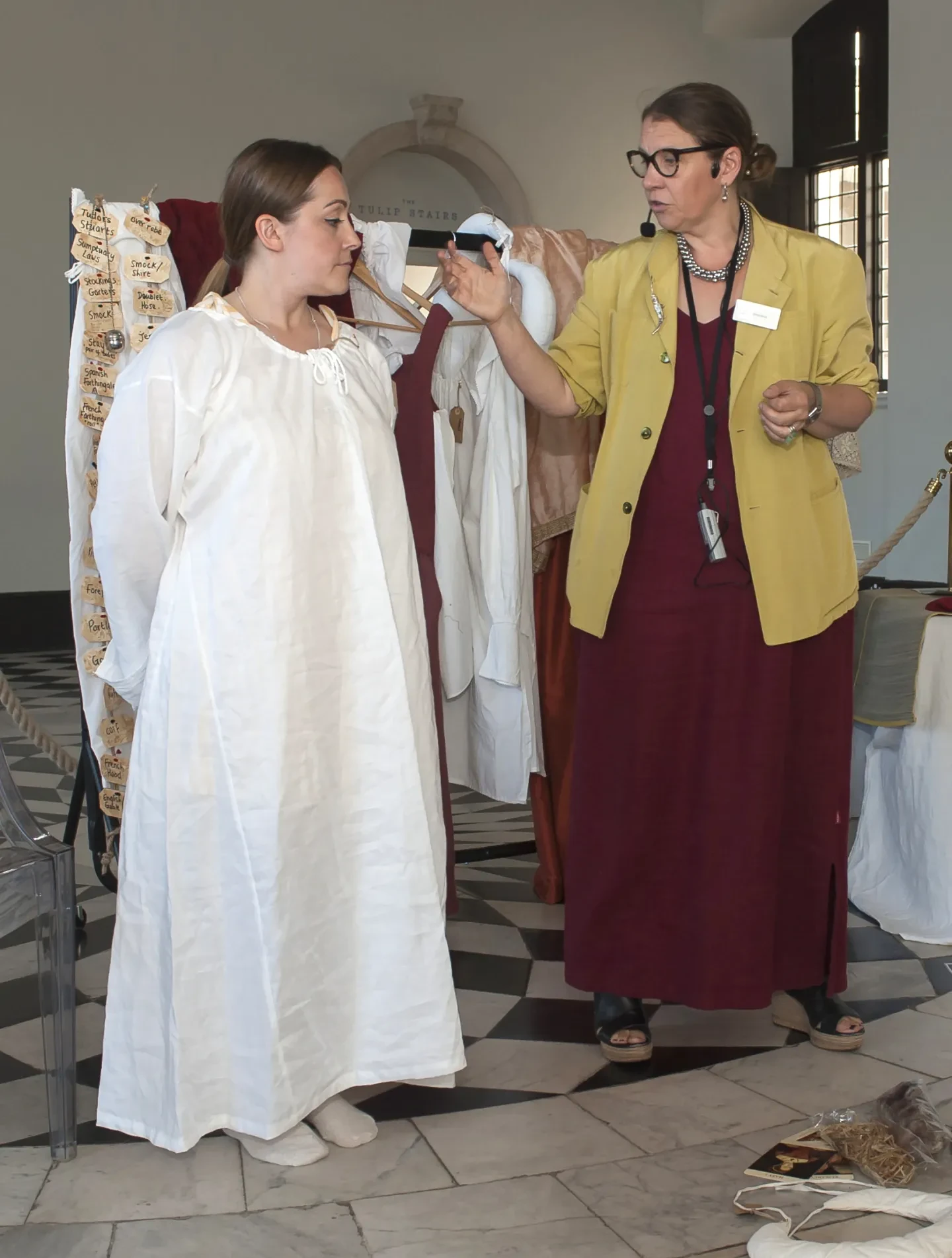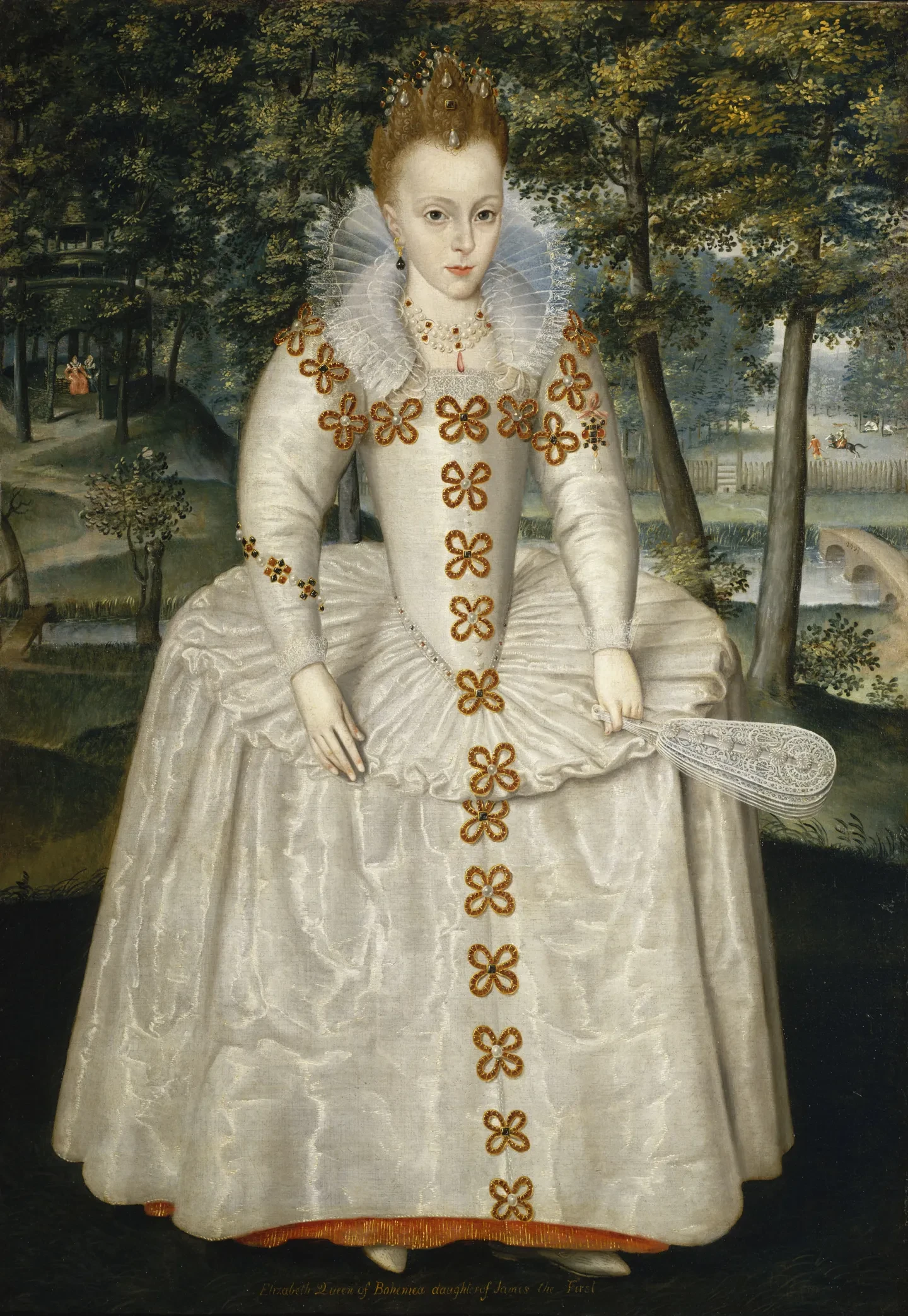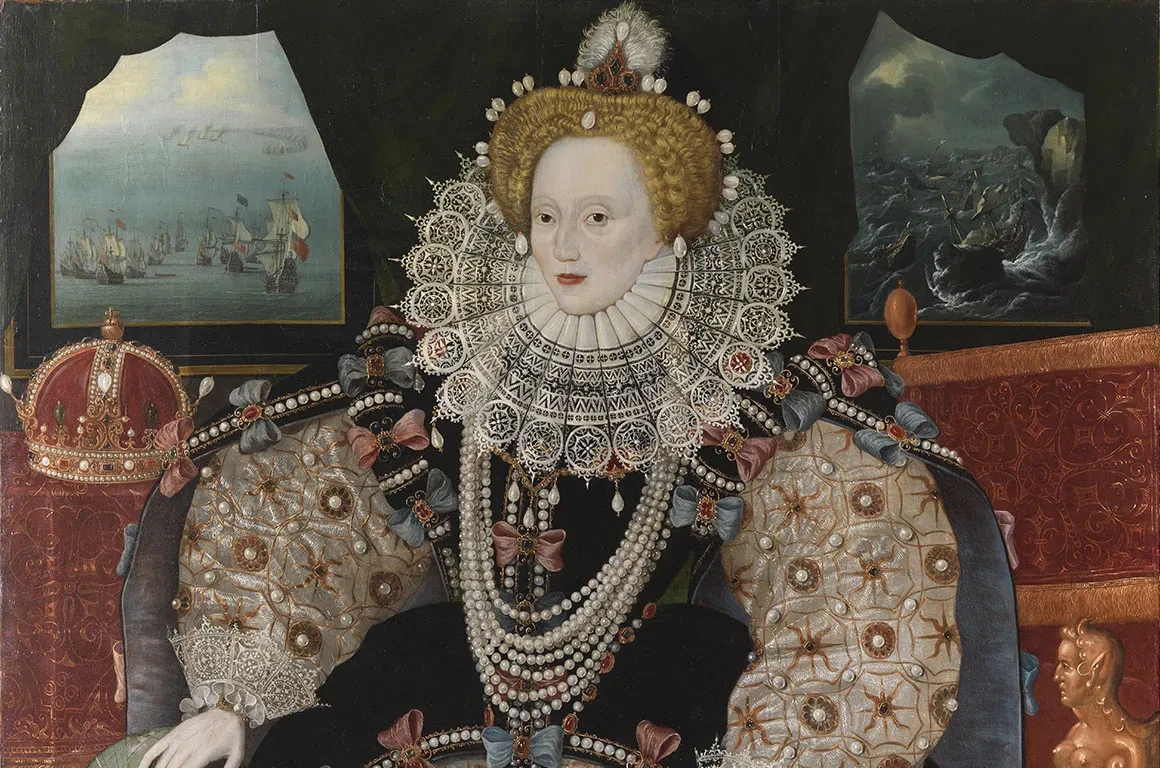
Every day at the Queen’s House is like a fashion show, every portrait on display is dressed to impress. When you are surrounded by the likes of Elizabeth I, Henry VIII or James I, it’s important to look your best. Luckily, the curatorial team is on hand to help. We have put together a handy list of the 16th century’s must-have fashion items to keep you looking on trend in the presence of their majesties.
By Jane Simpkiss
Linen Smock
The Queen may only bathe once a year, whether she needs it or not, but her body odour would be kept in check by her linen smock which was worn close to the skin as underwear and was changed daily. Linen smocks would have been worn by all members of Tudor society.

Pair of Bodies
Worn on top of the linen smock, this corset was strengthened with whalebone and tied together at the front. The pair of bodies, or set of stays as it was later known, helped to create the elongated torso and otherworldly alien appearance which was popular at this time. A pair of bodies made to Elizabeth I’s measurements survives in Westminster Abbey, although she never wore them. This garment was part of the costume of the effigy of Elizabeth placed on her coffin in her funeral procession.
Farthingale
The farthingale was a structured frame, worn around the waist, made of bent rope, reeds or later whalebone. Farthingales would be worn under petticoats and gowns to create the wide skirts seen in Tudor portraits. These skirts highlighted wealth and power as they increased a person’s physical presence in a room and forced her to walk slowly: only servants hurry! Keep your farthingale drum-shaped if you want to imitate the post-1570s look, otherwise wear a cylindrical number for that early Tudor throwback style.

Forepart
A forepart was an embroidered triangle of fabric stitched onto a plain under-petticoat or kirtle on the area that was visible through the opening at the front of a gown.
Gown
Make sure your gown is made of silk or satin. Wear this on top of your petticoats and embellish it with embroidery, pearls and silk ribbons to stand out at any Tudor masque. You might be a wealthy aristocrat or royal but that doesn’t mean you don’t scrimp and save. Elizabeth I was a frugal ruler, often re-embroidering gowns to revitalise her wardrobe.
She favoured black gowns because they were more versatile and were a good surface for different types of embellishments. The Venetian ambassador in 1603 wrote that he thought it was likely that the Queen owned over 6000 gowns but in reality it is thought she had just under 1500 pieces of clothing in her wardrobe.
Remember sleeves do not necessarily come included with your gown, so have your tailor make some up to pin to the bodice (vest tops aren’t in yet).
Ruff
Perhaps the most recognisable Tudor fashion items, ruffs were starched and pleated collars made of linen and lace worn around the necks of Elizabethan aristocracy. As the 16th century progressed, ruffs became larger and more intricate. Elizabeth I favoured large ruffs as they helped to create the illusion that she was a shining sun around which her kingdom orbited. Ruffs appear white in Tudor portraits, but it is thought that many may have been tinted pink or yellow.

Pearls (lots and lots of them)
If you want to blend in at the Tudor court, make sure you are never wearing less than fifty pearls at any one time. Tudor and Jacobean royals were particularly fond of pearls, the larger the better. Pearls were imported to Europe from the South China Sea, Borneo and Sri Lanka. Elizabeth I particularly liked pearls because they symbolised chastity and helped further the image of her as ‘the Virgin Queen’. In the Armada Portrait, Elizabeth is thought to be wearing over 800 pearls as part of her costume on top of the pearl jewellery she is already wearing.
Ceruse
Once you are fully dressed, it’s time for your make up. Put on a thick layer of ceruse to ensure a smooth pale complexion. Try not to think about the toxic levels of mercury you have now pasted on to your face. Remember to use a touch of vermillion on your cheeks when the ceruse starts to melt becoming grey, shiny and smelly.
Wig
Wigs were fashionable accessory that allowed aristocratic ladies to mix up their hairstyles and cover greying hair. Go reddish gold for the true Elizabethan look.
Gloves
Gloves are a vital accessory for any ruler to have. The ends of your gloves should extend past your fingers. You can enhance this lengthening effect with lines of decorative embroidery. Elizabeth I liked to wear rings on top of her gloves to indicate the distance between her and her courtiers. Don’t get too attached to your gloves, however, as you may be expected to give them away as social favours to other courtiers.
Fan
Fans were fashionable status symbols imported from Japan and China. These fans would have consisted of feathers set into a jewelled handle. Fans were very expensive so bringing one to court really makes a statement, but be careful not to make Elizabeth I jealous.
Silk Handkerchief
The Tudor answer to mouthwash. Do you find that you love of sugar (recently imported from the New World) is playing havoc with your teeth? Is your breath not as sweetly scented as a Tudor rose? Fear not! Soak a silk handkerchief in perfume and put it in your mouth. This will prevent you from being able to speak properly, but unless you’re the Queen no one cares about your opinion anyway, feminism won’t hit England for another 400 years.
Once you are dressed and ready, you can be admitted into the Queen’s Presence Chamber – get ready to meet her majesty.